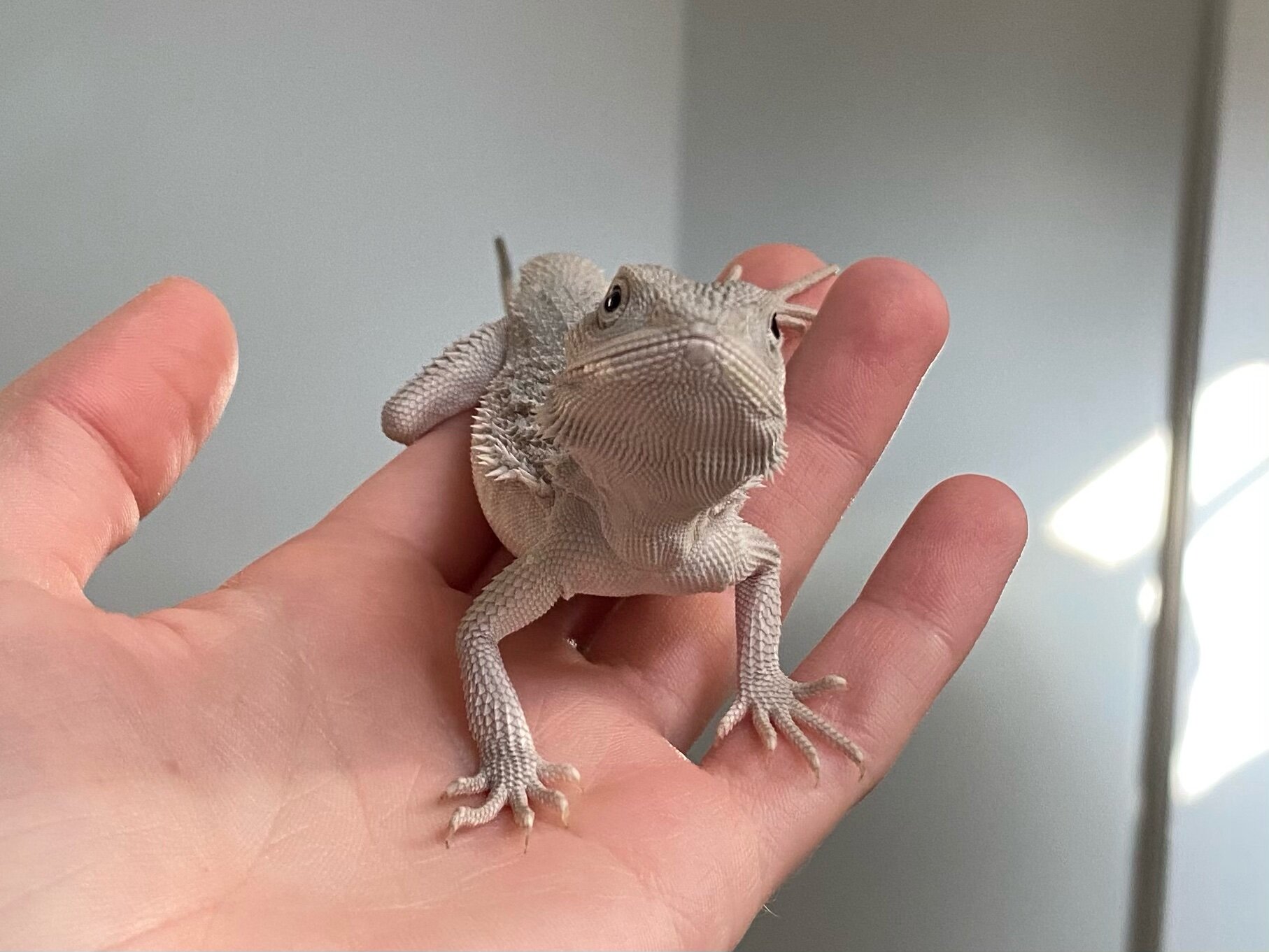bearded dragon care tips
Bearded Dragon - Pogona
Introduction
The Bearded Dragon is an extremely popular pet for their docile attitudes and entertaining personalities. Interacting with beardies can be super rewarding since they’re so animated in their movements- bobbing their head when proud and waving occasionally. They start out being only a couple inches in size then grow to a whopping 18-24” lizard! Since they originate from the rocky deserts of Australia, they thrive in a warm, arid environment. Once you have the enclosure set up, get used to the feeding & supplement schedule, and spend time taming your dragon- they’re amazing pets to have!
Enclosure
Baby dragons can start out in a 20 gallon or 36”x18’x18” enclosure. Juveniles can get away with a 40 gallon enclosure, but adults will need a 75 gallon enclosure at minimum. 4’x2’x2’ (120 gallon) enclosures are good for adults. Bearded dragons can be put in their adult enclosure as babies as long as enough clutter (climbing materials, hides, decorations, etc.) is provided. Enclosures with solid-colored walls and front open doors are great to provide security. If you have a glass tank for babies, black paper can be great to darken three sides of the enclosure and have the same effect. Bearded dragons need full spectrum UVB in the form of a UVB bulb such as Arcadia HO 12% or reptisun T5 HO 10.0. Arcadia bulbs have a higher price tag, but last longer. Substrates like paper towels and newspapers make a for a quick and easy clean up but don’t always appeal to the eye. Non-stick contact paper makes a great semi disposable easy to clean alternative. Another great option is tile as it keeps their nails filed down and is fairly easy to clean. Loose substrates are not recommended for bearded dragons. You can even put reptile-safe live plants in your beards enclosure (as long as the soil is 100% organic with no added chemicals) for them to snack on. Good plants for this are opuntia cacti, basil, oregano, mint, rosemary, and elephant feed. Adult bearded dragons don’t always eat all the greens they need to so having an edible plant around all the time can really help with balancing their diet if needed. Only keep one dragon per enclosure as they cannot cohabitate peacefully. There are people who will swear they’ve done it successfully, but it’s always successful until one day it’s not. It isn’t worth the risk to your beardies well being.
Parameters
Bearded dragons do best with a basking spot temperature of 95-100. The ambient temperature on the cool side should be 80-85. Nighttime temperatures can safely drop to 70-75. This species does need a High Output UVB to form strong bones and stay healthy. We recommend Arcadia T5 12% bulbs which are similar to ReptiSun T5 HO 10.0 UVB bulbs but with a longer life span. The bulb needs to cover ⅔ the enclosure and sit 6-8 inches above the basking spot for proper absorption. Humidity can fluctuate quite a bit between 20-70%. Boost the humidity during the shedding cycle, otherwise try to keep it a tad lower. 50% humidity works well for bioactive enclosures.
Diet
When a bearded dragon is young it will need to eat 1-3x a day. It’s diet will consist mostly (like 80%!) bugs and only 20% greens but by the time a dragon reaches 3-5 years old those numbers will flip and they’ll need to eat mostly veggies and only 20% bugs. Bugs like dubias, crickets, and mealworms make great protein sources. Be sure to include veggies and fruits like finely chopped carrots, collard greens, and mangos. Calcium is a critical component to their health so daily dustings of a quality calcium supplement are required. Look for a calcium supplement with a calcium: phosphorus ratio of 2:1 or 3:1. Focus on feeding greens with double calcium to phosphorus content, too. They’ll need small infrequent doses of Vitamin A and Iron. This can be achieved by dusting their food with a quality multivitamin up to 2x a week for babies and 1x a week for adults.
Temperament
These reptiles are generally calm, docile creatures. They’re known to just kind of- sit there. However, once they get comfortable they love running, climbing, and jumping. Young dragons love running across your hands. Bobbing their head is often a sign of dominance or pride, in a way. They’ll often be seen doing it after they climb something feeling like they’ve conquered something. Taming them can be quite simple as long as it’s consistent. They’re often food driven and will quickly tame with tong feeding.
Common Health Problems
Babies can become dehydrated very easily and may need a little assistance hydrating until they learn to drink on their own. It can help to lightly mist the dragons face to do this. They may not like it at first, but once they realize what’s happening they’ll usually start slurping it up. Bearded dragons are also prone to Metabolic Bone Disease so it is absolutely crucial to provide proper diet, supplementation (calcium & vitamins), and husbandry. Without these their bones can become brittle and weak causing all kinds of problems.
Getting pet insurance for Bearded Dragons may also provide additional peace of mind, though exotic pet policies are notoriously hard to come by. Money.com has a great article that breaks down many different policies (including Nationwide’s exotic pet insurance) to help you decide when (and if) pet insurance may be right for you. Check it out here: https://money.com/best-pet-insurance/.
